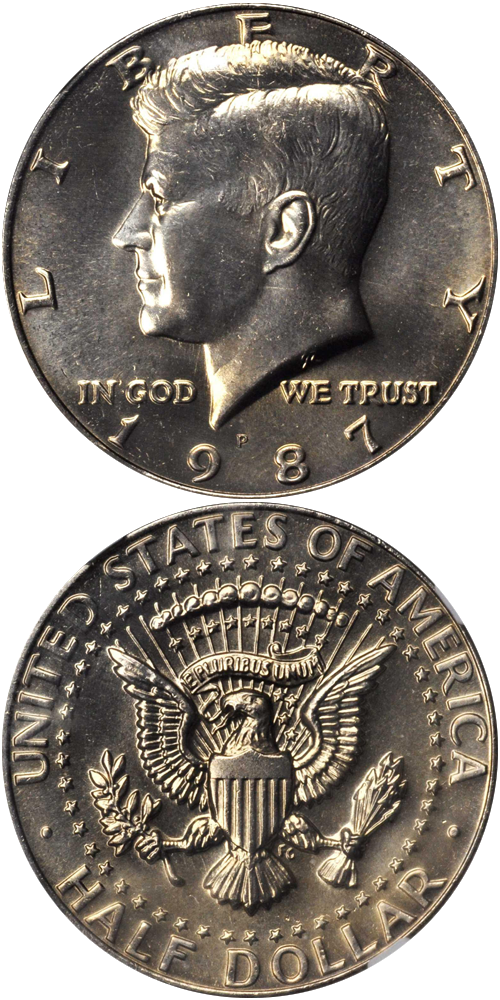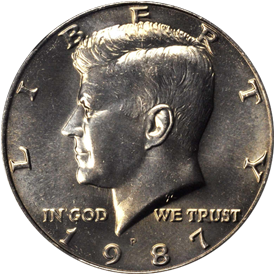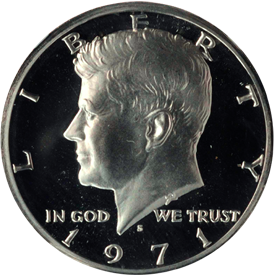Designed by: Gilroy Roberts and Frank Gasparro
Issue Dates: 1971-1974, 1977-date
Composition: 75% copper, 25% nickel over pure copper core in clad form, either 90% or 99.9% fine silver proofs made starting in 1992
Diameter: 30.6 mm
Weight: 11.34 grams (175.00 grains, clad coins), 12.5 grams (192.90 grains, 90% coins), 12.65 grams (195.21 grains, 99.9% coins)
Edge: Reeded
Business Strike Mintage: 2,346,341,126 (clad coins, through 2019)
Proof Mintage: 109,349,436 (clad coins, through 2019), 21,241,241 (silver coins, through 2019)
While the half dollar clung to at least a portion of its silver heritage from 1965 through 1970, in 1971, the hammer finally fell, and the half dollar produced for circulation was now entirely struck from a copper-nickel alloy similar to its smaller siblings, the dime and quarter. The inner core was now pure copper while the outer layer was a mix of .750 copper and .250 nickel.
Beginning in 1992, Proofs in .900 fine silver were struck for collectors (12.5 gram weight) and in 2019, the fineness was increased to .999 (12.65 gram weight). In its pure form, the half contained .364 oz of silver. A special 50th anniversary coin was struck in gold at the West Point facility in 2014 bearing both the 1964 and 2014 dates.
Even though the coin now had no bullion or “melt” value, the non-collecting public was confused by the alloy changes, and the notion that Kennedy halves were worth “money” has persisted to this very day. As a consequence of their virtual absence from circulation, the mint ceased production of Kennedy halves for circulation beginning in 2002, and struck them only for collectors in Proof and Mint sets. They are also sold by the mint (for a premium) in rolls of 20 or bags of 200 pieces.








